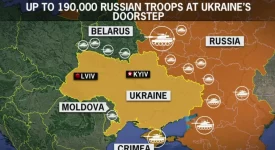The chief of the European diplomacy, Baroness Catherine Ashton, paid a visit to Iran last weekend (March 8-9). She has become the first senior EU representative to have visited the country since 2008. Her landmark “business trip” to Teheran is mainly a bilateral visit with the objective of exploring new potentials for the relations between Iran and the European Union. The main challenge for Ms Ashton’s “soft bridge-building” diplomacy is how to draft a new course on the mutual ties amidst Iran’s political factions and disagreement of the EU member states on how deep the Teheran-Brussels link should be.
Among the most consequential topics in the EU-Iran discourse are mostly Teheran’s nuclear program and the role of Iran in the Syrian civil war. As to the latter, Brussels would like to see Iran to play a more prominent role in the Syrian devastating conflict as Iran is considered one of Syrian President Bashar al-Assad’s main allies. As to the former, Iran’s foreign minister, Javad Zarif, has promised to deliver a nuclear deal in the upcoming four months although Baroness Ashton added that there was no guarantee that her negotiations would eventually lead to a comprehensive agreement. Ms Ashton was already instrumental in curbing Iran’s nuclear program in November 2013 when she negotiated few concessions from the side of Iran in return for some sanctions relief from the EU.
Mr Zarif said that an interim agreement on Iran’s nuclear program is truly salient but not as important as a comprehensive deal, which is going to be challenging and difficult. Like Ms Ashton, he also added that there was no guarantee that they would succeed. Yet, he emphasized that Iran showed good faith and political will to reach a mutually acceptable deal. Brussels believes that Ms Ashton will not only be successful in negotiating further nuclear program concessions but also in convincing Teheran that there is a lot to gain from the mutual relationship.
Article Categories:
GLOBAL EUROPE






